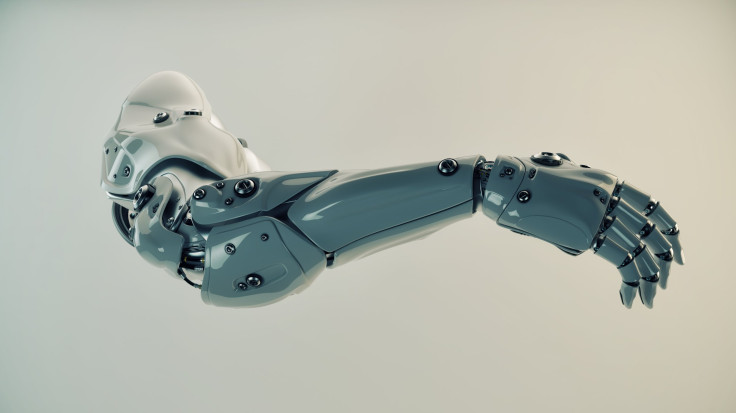Human Exoskeleton, The ‘Body Extender,’ Is ‘Most Complex Wearable Robot’ Ever Built

Engineers in Italy have created what is known as the “Body Extender,” a type of machine that humans can be strapped into like something out of Star Wars.
At the Perceptual Robotics Laboratory, also known as Percro, engineers have created a robot that can carry humans, protect them, and move heavy objects as a form of exoskeleton, or skeleton outside of the body.
“This is the most complex wearable robot that has been ever built in the world,” Fabio Salsedo of Percro told the BBC. “It’s a device which is able to track the complex movement of the human body and also to amplify the force of the operator.” The machine can lift about 50 kilograms (110 lbs.) in each of its hands, and can exert 10 times the force that the person inside applies. This gives humans super strength: a chance to pick up really heavy objects and throw them much farther than our natural bodies could.
The term "exoskeleton" is used to describe the outer skeletons, or shells, in insects and animals like grasshoppers, cockroaches, crabs, and lobsters. The exoskeleton provides these critters with support and protection against predators.
For humans, the engineers see plenty of options in which robotic exoskeletons could be beneficial. “There are several possible applications,” Salsedo told the BBC. “For example if you have to assemble a very complex product like an aircraft, this is a machine which is very flexible. You can lift the panel, rotate it and position it in the right position.” The robot may also be used to rescue victims in cases of natural disasters like earthquakes, when “you need something very flexible in order to intervene rapidly without damaging the victim,” Salsedo said.
Another exoskeleton technology company in Israel, Argo Medical Technologies, developed a device called ReWalk to be employed in medicine. ReWalk helps people with lower limb disabilities to walk using crutches. It’s approved for use in Europe, but has yet to be approved by the FDA.
Dr. Ann Spungen, associate professor of rehabilitation medicine at Mount Sinai, has been studying spinal cord injuries and has been watching the gradual development of robotic exoskeletons for years. Spungen has done research that supports ReWalk as a beneficial device: “All the terrible things that go wrong from a sedentary lifestyle are magnified in a person with spinal cord injury, so any activity that we can provide for them, stands to reason to have benefit,” she told CBS News. Not to mention the emotional benefits of being able to walk and move again after a devastating injury would be significant.
Professor Chris Melhuish, director of the Bristol Robotics Laboratory, told the BBC that exoskeletons are “a technology which is growing fast and maturing. The type of functionality of the exoskeleton depends on what you want it to do and to what degree you want it to be autonomous.” He said they have the potential to work in medical rehabilitation, or can “augment human function” in the context of military or factories, where people may handle heavy materials.



























